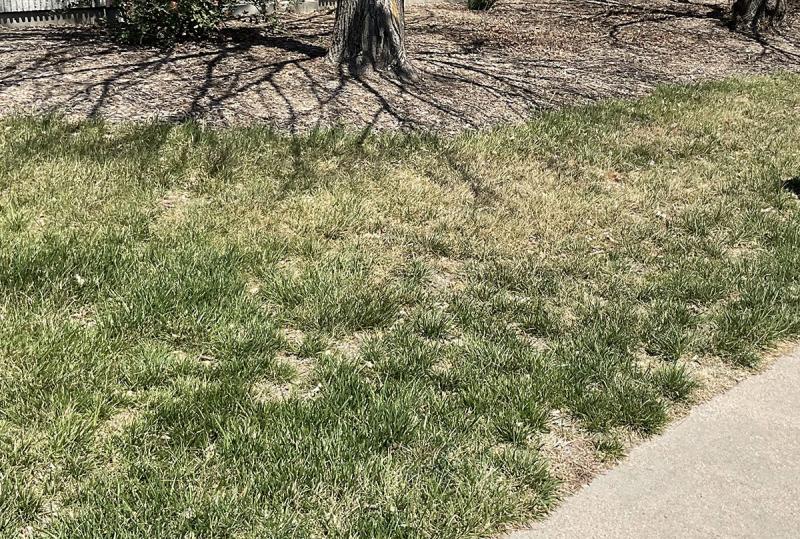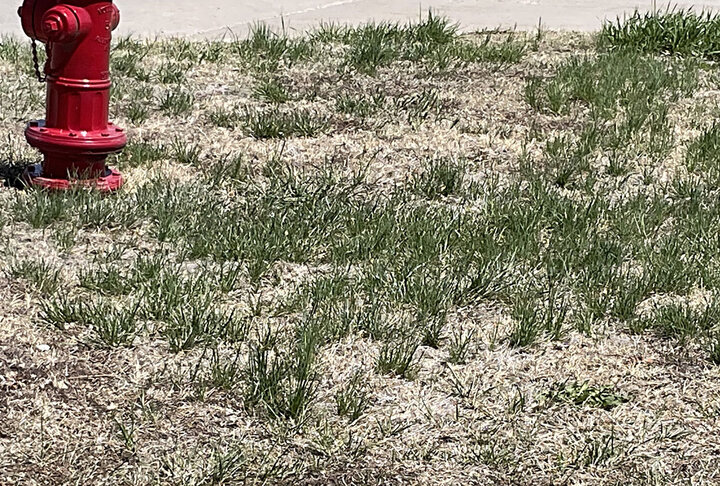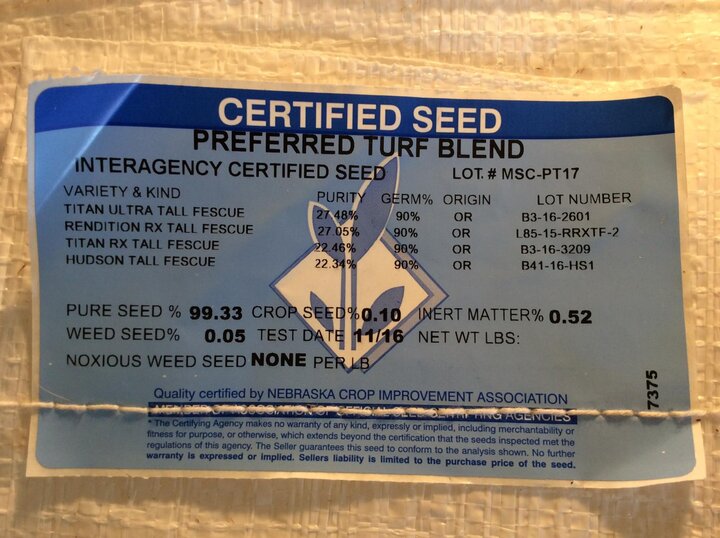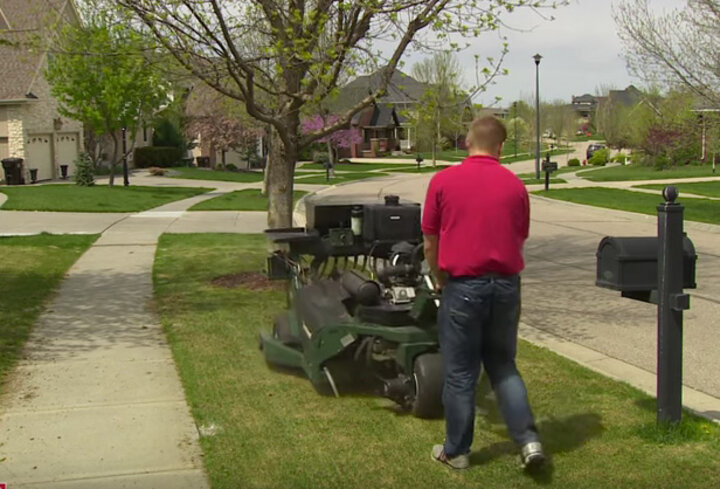Sarah Browning, Nebraska Extension Educator

Moderate lawn thinning and drought damage. Image by Sarah Browning, Nebraska Extension.

Last summer's dry conditions were hard on lawns and this spring many unirrigated lawns are showing dead patches or thinned grass stands. These areas are pretty easy to spot now. Look for patches not greening up as they should. Or areas with a large percentage of bleached, light tan leaf blades. In areas with severe damage, you may even see bare ground. These areas will need to be reseeded or sodded to re-establish a thick healthy grass stand and prevent weed invasion this spring.

Purchasing Seed
Kentucky bluegrass and turf-type tall fescue are still the best cool-season grass choices for home lawns. Make sure when buying seed to purchase a high quality, certified seed blend. Remember- scrimping on the quality of the seed will soon be evident in the quality of turf.
Seed that is certified by the Nebraska Crop Improvement Association is identified with a blue tag on the seed bag. A good grass blend should include 3-4 different cultivars of the grass you chose- Kentucky bluegrass or turf-type tall fescue - or a mixture of both bluegrass and fescue together. Check the seed label and avoid seed blends that include coarse textured, pasture grasses like K-31 tall fescue or annual grasses like annual bluegrass or annual ryegrass.
Seeding
Complete your overseeding as soon as possible. April 1st to May 15th is the ideal window, seeding past May 15th becomes increasingly difficult as summer temperatures rise, drier conditions set in and weed pressure intensifies.
The amount, or rate, of seed applied when overseeding is less than the full seeding rate for bare ground. The full seeding rate for Kentucky bluegrass is 3-4 lbs. per 1,000 sq.ft., and tall fescue 8-10 lbs. per 1,000 sq.ft. When overseeding into an existing stand, the rate can be reduced by up to 50%, meaning that bluegrass should be applied at 1-2 lbs. per 1,000 sq.ft. and tall fescue at 4-6 lbs. per 1,000 sq.ft. When working with small amounts of seed, mix sawdust, dry sand, or any other suitable material with the seed to aid in obtaining uniform coverage.
Prepare the Area
Before spreading the seed, prepare the soil to create a good seedbed. Small areas can be prepared by hand raking to remove excess dead top growth and loosen the soil surface. Larger areas should be heavily aerated or power raked.

Aerating opens up the soil and provides a good surface for seed germination. Seeds that fall into the aeration holes will germinate and grow well; there is no need to topdress or fill in the holes before seeding.
Power raking should be used only if a thatch layer in excess of 1/2" is present.
Follow Up Care
Hopefully, eastern Nebraska will receive timely spring rains in May. But if we don’t, you’ll need to irrigate the seeded area as soon as it is applied until germination has occurred.
After germination, gradually decrease the amount of water applied. Kentucky bluegrass should receive 1" of water during spring and fall, and 1.5" of water in mid-summer. Apply water deeply and infrequently to encourage deep rooting.
Applying a pre-emergent herbicide for weed control is especially important with spring seedings since weed pressure is so much greater than in fall, but be very careful in your herbicide selection. Mesotrione and siduron (Tupersan) are the only preemergent chemicals that can be used on lawns while seeding. Both kill germinating crabgrass and foxtail, but will not kill germinating Kentucky bluegrass or tall fescue seeds.
Mesotrione is the active ingredient in Scott’s Turf Builder Triple Action Built for Seeding and is one of the most common homeowner products in stores for new seedings. If any other preemergent is used – including prodiamine, benefin, balan, dithiopyr – germinating grass seeds will be killed along with weed seeds.
If the area to be seeded has already been treated with a traditional preemergent herbicide, then sodding is the best option until the preemergent has broken down. Check the product label or talk with your lawn care company to determine which product was applied and the length of its residual effect.
Fall Seeding
Finally, if spring seeding is just not possible or you run out of time, then plan for a fall seeding. This is actually the very best time of year for seed establishment with cool season turfgrasses. Mark your calendar for August 15ththrough September 15thto get your fall seeding done.
Establishing Lawns From Seed, Nebraska Extension.
Reference to commercial products is made with the understanding that no discrimination is intended and no endorsement by Nebraska Extension is implied. Mention does not imply approval or constitute endorsement by Nebraska Extension. Nor does it imply discrimination against other similar products.
Images:
- Severe lawn thinning and drought damage. Image by Sarah Browning, Nebraska Extension.
- Blue-tag certified lawn seed. Image by Sarah Browning, Nebraska Extension
- Aeration is a great way to prepare for overseeding. Image from Backyard Farmer.
Search Our Archive
Associated Video
Digging Deeper Turf Best Practices
Digging Deeper with Backyard Farmer looks best practices for your home lawn. With Nebraska Extension Landscape Horticulture Specialist Kim Todd and Nebraska Extension Turfgrass Specialist Bill Kreuser and Nebraska Extension Entomologist Jonathan Larson.